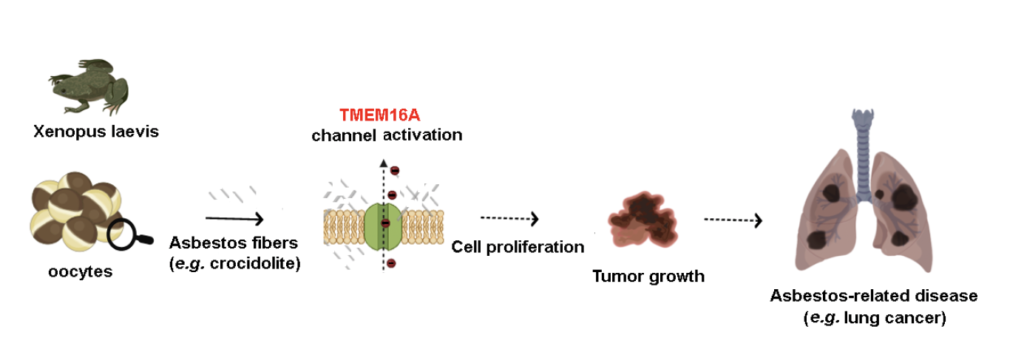Asbestos fibers and cell membranes: interaction revealed
|The serious effects of asbestos on lung tissues are, unfortunately, dramatically known. However, the molecular mechanisms of action by which the fibers cross the cell membrane, reaching the DNA and interfering with transcription activity, are not yet completely understood.

To shed light on this process, Dr. Annalisa Bernareggi (University of Trieste), CERIC PhD fellow Martina Zangari, Prof. Giuliano Zabucchi (University of Trieste) and colleagues investigated the enhancement of chloride conductance induced, in Xenopus oocyte cell membranes, by exposure to asbestos fibers. In particular, they studied the modulation of a calcium-activated chloride channel protein, TMEM16A. Using different investigation techniques, including voltage clamp, calcium imaging and Western Blot, researchers have shown that treatment with asbestos reduced the cell membrane resistance, and that this change is mediated by TMEM16A channels.
Given that the alteration of calcium homeostasis is a distinctive sign of lung cancer, and that TMEM16A is highly expressed in many types of tumors, including some of the ones induced by asbestos, these results suggest that these channels can be considered possible early targets of asbestos-mediated tumorigenic effects on cell membranes.
ORIGINAL ARTICLE:



